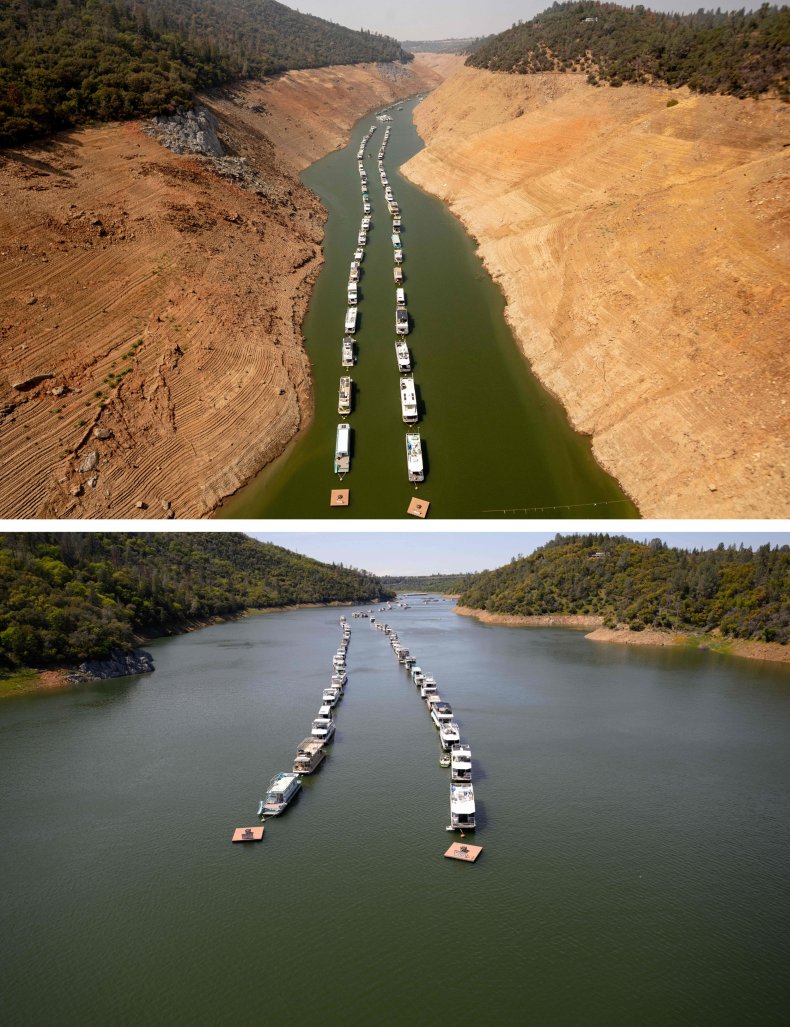Before and after photos are showing how California's Lake Oroville has gone from nearly empty to full capacity.
The lake, California's second-largest reservoir, was suffering at the hands of an ongoing drought that has gripped the state for years.
In November 2022, the lake was at an elevation of around 665 feet. This was before severe winter storms battered the state and accumulated a record amount of snowpack in the Sierra Nevada.
Following months of heavy rainfall, which began in December 2022 and continued on and off, all the way through until early March 2023, the lake now looks very different.

With the spring weather, and warmer temperatures, the record amount of snowpack has now melted, replenishing the state's reservoirs. Lake Oroville is now at full capacity, at an elevation of 900 feet.
Photographs from September 5, 2021, show the lake appearing almost totally dry. This was as the drought continued to ravage the state, with a severe lack of rainfall.
As the snowpack melted, a picture taken on April 16, 2023, shows a very different picture. The same landscapes looks completely transformed, with water covering every inch of the previously dry river bed.

One picture shows the Enterprise Bridge, which stretches across the reservoir. In September 2021, the bridge stretched over a barren river bed.
Only a small amount of water can be seen in the distance.
But the comparison image, taken this April, shows the valley full of water.
California's drought status looks very different after the large amount of rain and snow seen over the winter period.

According to an update from the U.S. Drought Monitor at the beginning of this month, the drought in the state has pretty much lifted, with only 4.63 percent of the state in a moderate drought, and 29.12 percent being abnormally dry.
Just three months ago, some 24.96 percent of the state was in a severe drought and 49.13 percent in a moderate drought.
At the beginning of the calendar year, nearly 100 percent of the state was in a moderate drought.
Other areas of California have seen the effects of the rapidly melting snowpack.
Areas including Yosemite National Park have flooded. The park's Merced River reached record flows last month.
This is expected to continue throughout June and perhaps into July.
Although the melting snowpack has provided much needed relief to the drought stricken state, it is still likely to see more "whiplash" seasons as climate change worsens, experts believe.
This is where extreme weather conditions are seen in close succession, so the snowpack will probably only be a short-term solution to the state's drought problems.
Nhận xét
Đăng nhận xét